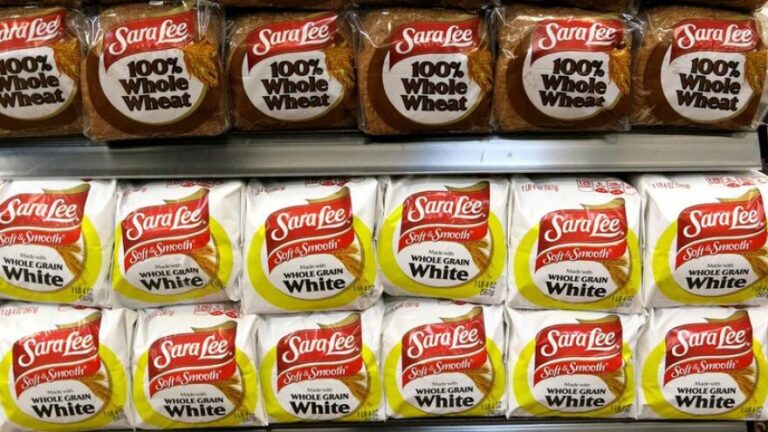Russia’s invasion of Ukraine cut off wheat exports, while drought conditions in the Great Plains will further reduce grain stocks. Reduced supplies could trickle down into higher prices for grocery list staples, such as bread and pasta.
Global wheat supplies have been tightened from Russia’s invasion of Ukraine, and now the crop faces a domestic threat: drought in the Great Plains.
In Kansas, one of the country’s top wheat producing states, an industry group predicts dry conditions will force harvests down by about 30% this year. The supply crunch won’t bring about empty grocery shelves, experts say, but could push up prices slightly for things like bread, pasta and flour.
“As far as I know people have been able to find grain. The question is, how much are you willing to pay for it?” asked Joseph Glauber, a senior research fellow at the International Food Policy Research Institute. “And I think that for poorer countries that may be an issue.”
Wheat is an important staple for countries like Egypt, where the grain makes up about 35% of per-person caloric intake. Egypt imports the majority of its wheat from other countries, like Russia and Ukraine.
But now that Russia’s cut off Ukrainian exports, Glauber said other countries will have to make up the difference.
“You have this buildup in Ukraine so you look at the wheat market and you think, ‘Okay, well, who can make up this grain?’” he said.
Many Great Plains farmers won’t be able to help with the effort. A largely dry, cold growing season has left fields parched and dead.
In Norton County, Kansas, farmer Chris Tanner said his wheat is looking so short it’ll be a challenge to even harvest it. Romulo Lollato, a wheat extension agent with Kansas State University, said that’s a common worry from farmers across the state.
“Their crop insurance is being called on and they say, ‘There’s nothing here to harvest,’” Lollato said. “So there’s a lot of abandonment going on.”
A smaller wheat harvest is something Dale Nellor is watching as the vice president of government and technical affairs for the North American Millers’ Association. The group represents food companies like Jiffy, a maker of baking mixes for muffins and cakes.
“A strong supply is always important, because consumer demand for a variety of products is always high, and they always want to be able to meet that demand,” he said. “And you can only do that with high quality products that largely can only be found in the United States.”
Nellor said the association’s members have strong relationships with wheat producers across the U.S. and will be able to source their ingredients despite the drought.
But between increased operating costs across the board, he said he’s not ruling out the possibility of price increases.
“I don’t think we’ll see shortages or empty shelves,” Nellor said. “But the reality is that we’re dealing with inflation, we’re dealing with increased costs across the board from commodities to transportation to labor. So it’s realistic that there’s an impact from all those combinations.”
Follow Elizabeth on Twitter: @Ekrembert
This story was produced in partnership with Harvest Public Media, a collaboration of public media newsrooms in the Midwest. It reports on food systems, agriculture and rural issues. Follow Harvest on Twitter: @HarvestPM

